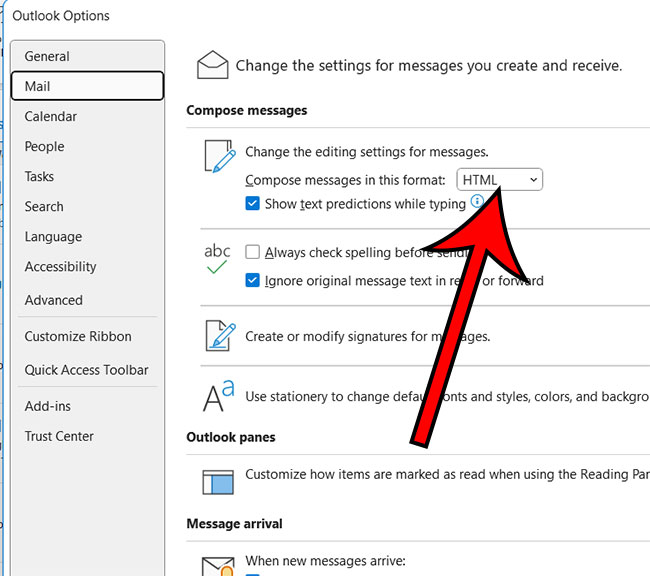Changing the message format in Outlook for Office 365 is simple. Navigate to ‘File’, choose ‘Options’, click ‘Mail’, then select your preferred format from the ‘Compose messages in this format’ dropdown. Outlook offers Plain Text, Rich Text, and HTML formats to cater to your unique email needs.
A Quick Peek into Outlook’s Evolution
Back in the day, digital communication was pretty basic. Picture those early computer screens: green letters, black backgrounds, and not much flair. Fast forward to today, and voila! Microsoft’s Outlook for Office 365 has transformed digital communication, offering a buffet of features and formats. Want to jazz up your emails? Here’s your guide to tweaking the message format in Outlook!
Related: How to Enable Strikethrough in Outlook 365
Why Changing Message Format Matters
Ever heard the saying, “It’s not just what you say, but how you say it?” Well, in the email world, it’s not just your words, but also how they look. Different formats serve different purposes:
- Plain Text: Imagine a no-frills, just-the-facts kind of email. No bolds, no colors. It’s straightforward, simple, and the most compatible across all email clients.
- Rich Text: Like adding a little razzle-dazzle to your emails? Rich text lets you format text, create lists, and more. It’s the middle ground between plain text and the next option.
- HTML: This is where the magic happens. Colors, fonts, images, hyperlinks – you name it. If you’re into sending visually rich emails, this is your go-to.
Changing Your Message Format in Outlook: A Step-by-Step Guide
Step 1: Open Outlook and head over to the ‘File’ tab. Remember the good old days when everything wasn’t digital? It’s like flipping open your diary to jot down a note!
Step 2: From the menu, choose ‘Options’. Think of it as picking your favorite ice cream flavor. There’s more than one way to enjoy!
Step 3: The ‘Outlook Options’ window will pop up. Click on ‘Mail’. Picture walking into a room filled with all sorts of knobs and buttons. This is where you control your email’s inner workings.
Step 4: Look for the ‘Compose messages in this format’ dropdown. Kind of like selecting your car’s gear, choose your desired message format: Plain Text, Rich Text, or HTML.
Step 5: Hit ‘OK’, and you’re good to go! It’s like sealing an envelope and sending it off.

Pros and Cons of Changing Message Format
Pros:
- Flexibility: Changing formats allows you to cater to different audiences. Need to send a formal memo? Plain Text it is. Want to share your vacation pics with flair? Go HTML!
- Professionalism: An HTML email, when done right, can elevate your brand’s perception. Think of it as wearing a tuxedo to a business meeting.
Cons:
- Compatibility Issues: Not all email clients handle rich formats well. It’s like sending a DVD to someone with only a cassette player.
- Increased Risk: HTML emails are sometimes flagged as spam or carry malware. Imagine an overenthusiastic security guard who doesn’t let you in because you look “too fancy”.
In Conclusion
Outlook for Office 365 is more than just an email client; it’s a toolbox. The ability to change message formats is one of its nifty tools. Dive in, explore, and find the format that resonates best with your message. Remember, it’s all about making an impression!
FAQs
- Can I change the message format for a single email without affecting others? Absolutely! While composing an email, just head to the ‘Format Text’ tab and choose your format.
- What if the recipient can’t view my HTML email? Always good to have a backup! Include a plain-text version of your message when sending HTML emails.
- Do changes made in the web version reflect in the app version of Outlook? Changes to settings are generally account-based, so they should reflect. However, it’s always good to double-check!
- Is it possible to set different default formats for different recipients? Unfortunately, no. But you can manually change the format each time you compose a message.
- I changed to HTML, but my emails are still plain! Why? Some recipients’ settings might override and display your email as plain text. Also, ensure you’re composing in the HTML format.
Robert has been writing online guides and tutorials for years. He writes primarily about Microsoft Outlook for theoutlook.cc.